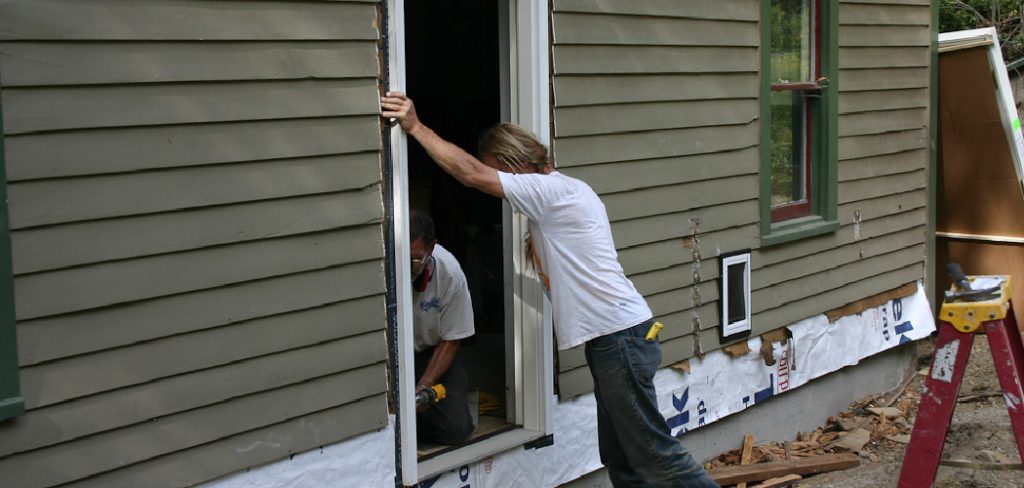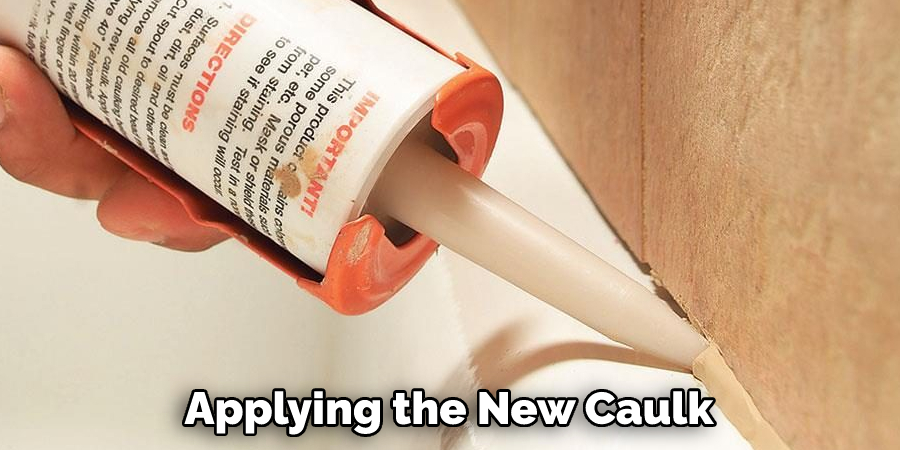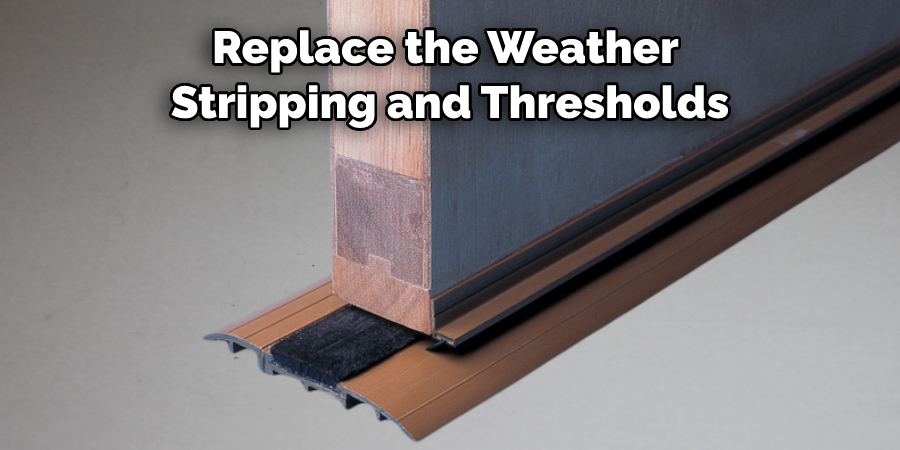Doors are an important part of any home. Not only do they offer security and privacy, but they can also serve as a beautiful way to decorate the entrance to your house while enhancing its curb appeal. Unfortunately, doors don’t last forever, and sometimes you may find yourself having to replace or fix one that has begun leaking.
Thankfully, repairing a leaky door doesn’t have to be complicated or expensive – all it takes is some know-how and basic tools! In this blog post, we’ll walk you through everything you need to know in order to patch up a leaking door quickly and easily.
So if you’ve been dealing with pesky drips coming through your front entryway every time it rains or snow melts outside, read on for practical advice on how to fix a leaky door!

What Will You Need?
1. Caulk: To seal gaps and cracks that may be letting moisture into your door, you’ll need a good quality caulk like silicone or latex.
2. Putty Knife: This tool is great for scraping away old caulk and grime before applying new caulking.
3. Safety Glass: To protect your eyes while you’re working, make sure to pick up some safety glasses.
4. Sandpaper: You may need to sand down any cracked or uneven surfaces to ensure a smooth and clean finish for the caulk.
5. Masking Tape: Use this tape to keep the area around your door free of any caulk residue as it dries.
6. Disposable Gloves: Don’t forget gloves – these will help protect your skin from contact with harsh chemicals and materials like caulk or putty knife blades.
Now that you’ve got all the necessary tools, you’re ready to get started on repairing your leaky door. Let’s look at the steps you need to follow to get the job done right!
10 Easy Steps on How to Fix a Leaky Door
Step 1. Put on Your Safety Gears:
Before you start, make sure to put on your safety glasses and gloves. It will protect you from any potential injury or damage while you’re working. Don’t forget to cover the area around the door with a drop cloth or newspaper to catch any drips of caulk.
Step 2. Clean the Area:
Next, clean the area around the door with a rag or brush to remove any dirt, dust, or grime. This will help ensure that the caulk adheres properly and lasts longer. Additionally, use a putty knife to scrape away any old caulk or sealant that is peeling and cracked.

Step 3. Remove Old Caulk:
Use your putty knife to scrape away any old caulk from the area carefully you’ll be caulking. Be sure to remove any paint chips as well. As you scrape, use a rag to wipe away any debris. Don’t forget to wear your gloves as you do this!
Step 4. Sand Down Uneven Areas:
Once all of the old caulk is gone, use some sandpaper to smooth out any uneven areas or cracks in the door frame that may have caused water to get inside in the first place. You can also use the sandpaper to smooth down any sharp edges from where you scraped away old caulk. Carefully sand around the edges of the caulked area.
Step 5. Apply Masking Tape:
To keep your freshly applied caulk from getting all over the place, use masking tape to cover the area around it. This will make it easier to clean up any excess caulk later on. Another tip is to use a lighter to help the tape stick better.
Step 6. Apply New Caulk:
Once you’ve prepped the door frame, apply a bead of new caulking along the cracks and seams. Use your finger or an old rag to spread evenly and smooth out any air bubbles that may have formed. You can also use a damp sponge to help create a more uniform look.
Step 7. Remove Masking Tape:
Once you’re done applying the new caulk, carefully remove the masking tape before it dries. Make sure there aren’t any air bubbles left and that the caulk is evenly distributed. If any fixings are required, now is the time to add them.

Step 8. Allow to Dry:
Allow the new caulk to dry for at least 24 hours before touching or applying anything else on top of it. You can use a fan to speed up the drying process. Just make sure that the fan isn’t blowing directly onto your door, as this could cause the caulk to dry unevenly.
Step 9. Clean Up:
Once the caulk has dried, you can use a damp rag to clean up any residue from around the door frame and window sills. Use a putty knife to scrape away any excess caulk that may have dried on the surface. Don’t forget to remove the drop cloth or newspaper that you have used to protect your floor.
Step 10. Test It Out:
Finally, test out your work by standing outside with a hose or watering can and spraying some water onto the area around your door. If you notice any more leaks, repeat Steps 2-9 until there are no more drips coming through! Otherwise, you can relax in the knowledge that your leaky door is now fixed.
With these ten easy steps, you should be able to fix your leaky door in no time! Make sure to wear the necessary safety gear and take your time while prepping and applying the caulk.
5 Additional Tips and Tricks
1. Replace the Weather Stripping and Thresholds. These components greatly prevent water from seeping into the gap between the door and frame. Replacing them is an inexpensive way to fix a leaky door and prevent future damage.

2. Use Caulk or Caulking Strips. Apply it around the edges of the door where it meets the frame. This will help to seal any gaps and keep out water.
3. Fix or Replace Broken Door Glass Panes. If you have a wooden door with glass panels, water can seep through them if they are not properly sealed or cracked. Make sure to repair any glass panels that may be damaged, as this could be causing your leaky door issue.
4. Check for Cracks in the Wood of the Door and Frame. Even small cracks can cause leaks, so make sure to inspect carefully and fill in any large enough to let water through.
5. Install an Adjustable Sweep. Installing it will provide extra protection against water damage. You can purchase these at most home improvement stores and have them installed yourself easily – all you need is a drill and a few basic tools.
These tips can help you fix your leaky door quickly and easily, saving you time and money in the long run! If you have any further questions or concerns, always feel free to reach out to a professional for help.
5 Things You Should Avoid
1. Don’t ignore the issue. If you don’t fix a leaky door now, it will only cause more damage down the road.
2. Don’t use duct tape or other quick fixes to try and patch the gap. These are unreliable long-term solutions and can often worsen the problem when they fail.
3. Avoid using too much caulk. This can be counterproductive as it can create a gasket effect that prevents water from draining away from your door properly and actually creates a bigger leak instead of fixing it!
4. Try not to paint over any cracks in the wood of the door or frame, as this could cause them to worsen over time due to moisture buildup beneath the paint layer.
5. Don’t try and fix a leaky door yourself if you don’t know what you’re doing. It’s always best to hire a professional for large or complex projects, as they have the right tools and experience to get the job done correctly. This will save you time, money, and potential stress in the long run!

Hopefully, these tips and tricks will help you take care of your leaky door problem in no time! If you have any questions or concerns, please feel free to reach out to a professional for help.
Conclusion
Now that you know the basics of how to fix a leaky door, it’s time to make sure that it stays in working order. Try to keep an eye on the door during wet or rainy weather and inspect it regularly for any noticeable signs of damage. It is also important to address any issues as they arise and make sure all openings, cracks, and crevices are properly sealed. You should also replace your weather stripping if you start noticing gaps or separations in the material.
Finally, take extra care when sealing during colder months, as temperatures can have an effect on caulking and sealant materials. Following these simple tips will help maintain your door and make sure it stays leak-free for longer!
Hopefully, this article has given you the information and tips you need to fix your leaky door quickly and easily. Remember to always reach out for help if needed, don’’t be afraid to invest in the right professional tools if you plan on doing it yourself. Good luck!
